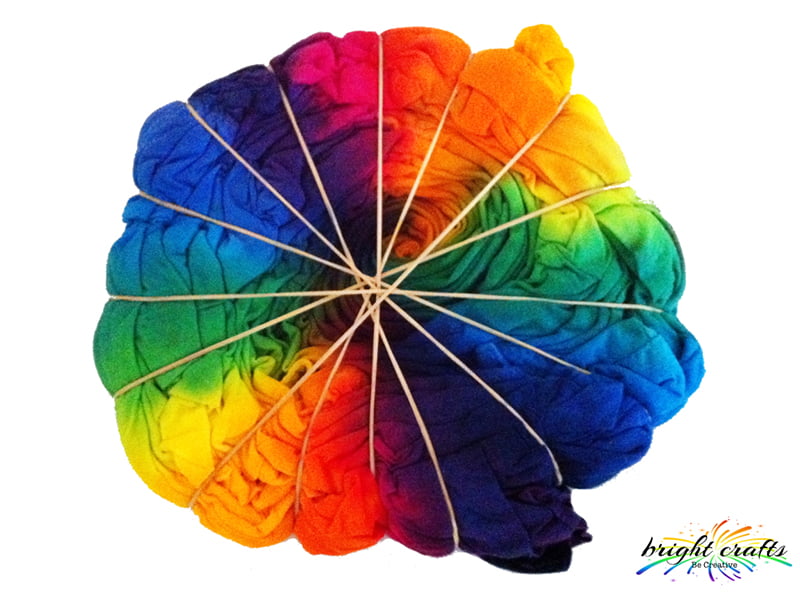
When most people think of tie dye they connect hippies and rainbows and maybe even kombivans! They don’t think of STEM – science, technology, engineering or maths, yet Tie Dyeing involves all of these STEM activities.
Creating colourful tie dye patterns on fabric is a fun and practical way for you and your children to experience and understand STEM. It’s a great tool for homeschoolers to add to your skillset too.
When Tie Dyeing you start with tying up your fabric. The patterns you fold in your fabric are mathematic divisions of the cloth formulated to create specific affects. If you fold a concertina fold then you are aiming to create equal folds across the fabric to create stripes. Tying your fabric into a spiral is a fun way to create your own fractals. Older children may like to try the traditional art of Japanese Shibori which involves mathematically based stitching or folding of patterns.
Rubber bands are used to hold your folds in place and are a great way to mark areas to dye in different colours; young children can see basic division happening before their eyes as they place the rubber bands on to divide their fabric for dyeing.
Next comes making up your dyes – children can learn about measuring liquids and the volumes different containers can hold. With careful observation children may notice that the different dye colours dissolve at different rates as some are powders and some are granules. Fibre reactive
dyes need soda ash solution to bond the dyes with the fabric – chemistry. The history of fibre reactive dyes is an interesting adjunct to tie dyeing. We will be writing more information about the chemistry and history of dyeing in our blog.
The part everyone loves best is pouring the dyes onto their fabric. Bright Crafts Spectrum, 6 Big Bottles and Rainbow Tie Dye kits includes yellow, magenta and turquoise dyes. Due to the transparent nature of our fibre reactive dyes you will be able to demonstrate colour theory and
colour blending as you apply the dye to your fabric. Your children will be able to create their own colour spectrum by mixing the primary dye colours to make secondary dye colours – turquoise and yellow to make green, turquoise and magenta to make purple and magenta and yellow to make
orange. By varying the amount of each primary colour you apply your children will be able to see the transition between primary and secondary colours. More yellow than turquoise gives you lime green, more magenta than turquoise gives you violet etc. Your children will be able to see the
marvel of colours blending in front of their eyes.
As well as colour blending your children will be able to create colour repetitions or sequences; maybe even fun messages in morse code!
Participating in Tie Dyeing will give your children the opportunity to try a traditional art form that encourages them to take risks, find solutions, try new ideas, follow instructions and create a beautiful colourful item that they’re proud to wear or use.

